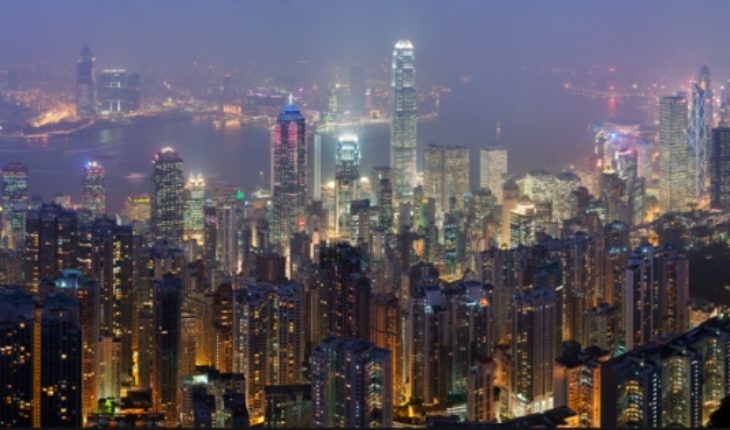Hong Kong protests against extradition law have taken cover the front pages of international media cause Surprise and strangeness: How can Hong Kong citizens manifest themselves if China is a communist regime? What sets Hong Kong apart from the rest of the country? What impact will these protests have on China’s foreign policy?
As is well known, Hong Kong has a special status in Chinese constitutional order as a result of its colonial past. In negotiations between 1982 and 1984 between the governments of Margaret Thatcher and Deng Xiaoping, the “one country two systems” formula allowed the return of sovereignty of the territory to the People’s Republic of China on 1 July 1997. This formula was actually devised earlier with the aim of convincing Taiwan that reunification with China would be carried out in compliance with the capitalist and democratic system of the island. The Hong Kong Special Administrative Region was thus born following an experimental and pragmatic logic giving rise to a model sui generis autonomous region within a unitary state.
Hong Kong thus became an international financial center from where the necessary investments for the industrialization of Guangdong Province departed. This “free port” function remains vital for Beijing in deepening the internationalization of its economy. Therefore, the current project of the Greater Bay Area of Guangdong-Hong Kong-Macau is considered by the authorities a key part in the Belt and Silk Road thanks to its privileged access to international financial markets and its high-tech industry .
From an economic point of view, the formula of “one country two systems” has been a success, yet from a political point of view Hong Kong civil society undergoes an unexpected process of politicization. Hong Kongers enjoy civil rights and freedoms comparable to Western democracies, but their political rights are limited. Most analysts agree to call Hong Kong a semi-democracy or liberal authoritarianism. This has been demonstrated by the outlawing of an independence party last year and the ban, in 2016, on six elected deputies from holding their seats in the Legislative Assembly for not properly taking the oath of office to the Chinese constitution.
While freedom of expression and expression in Hong Kong are permitted within the law, its authorities are not designated by popular choice. Only half of the legislative assembly is democratically elected. On his side, the chief executive is elected by a college of large voters, composed of union representatives and entrepreneurs, and is eventually appointed by the central government.
Paradoxically, there seems to be a causal relationship between these limits to democracy and the high autonomy of the region. Given Hong Kong’s high degree of self-government, Beijing does not seem to want to risk having to deal with a government of opposite ideology. Hong Kong thus represents a strange case of region with administrative autonomy without political autonomy. In short, while it is true that “Hong Kong is ruled by hong-Konisians”, in reality the “Hong Kong patriots”, as graphically stated by Deng Xiaoping.
The current protests cannot be understood without taking into account this institutional model. The Hong Kong government with the intention of moving towards the integration of the region with the rest of the country, tried, without success and on its own initiative, to adopt a legislative amendment that would create an extradition system to mainland China. Beyond legal considerations of the shortcomings of this mechanism, public opinion perceived this amendment as a threat to fundamental rights and freedoms. This controversy was somehow “the drop that filled the glass” of the fed-up on the part of society in the face of the systematic alignment of its rulers with Beijing’s interests.
The Hong Kong executive then proved incapable of dealing with complex political situations where administrative technocracy must make way for negotiating and communicative expertise. This was reflected in the promptness with which Beijing stated that it had nothing to do with the origin of the amendment leaving the chief hong-born executive, Carrie Lam, “at the feet of the horses.” Similarly, during the drafting of the text, there was no negotiation with the democratic opposition despite the controversy to be created and the precedents of the 2003 and 2014 protests. Moreover, in the face of recent mobilizations, the Hong Kong government awkwardly decided to “run forward” and process the amendment by emergency, which ended up warming the mood.
Hong Kong society, educated in the values of liberal democracy and pluralism, does not have institutional tools in place to influence the legislative agenda or public policies. The only means available to “do politics” is the street demonstration. Unlike the festive and colorful protests of the Hong Kong “outraged” of 2014, we are now watching with concern how the collective action repertoire has evolved from civil disobedience to violence, as reflected in the occupation of the legislative assembly on 1 July.
Yet the formula of “one country two systems” does not seem to be at risk. While Hong Kong society is likely to continue to polarize, the political conflict itself should not be a cause for alarm. On the contrary, it does not appear that the protests will lead to real unrest or major diplomatic conflicts. Hong Kong is a middle-class, intercultural and peaceful society, where rupturist choices, such as independence, do not enjoy much popular support. In the long run, however, the inevitable advance of Hong Kong’s integration with China will need new mechanisms of participation to avoid the repetition of new political impasses.
The content poured into this opinion column is the sole responsibility of its author, and does not necessarily reflect the editorial line or position of El Mostrador.





